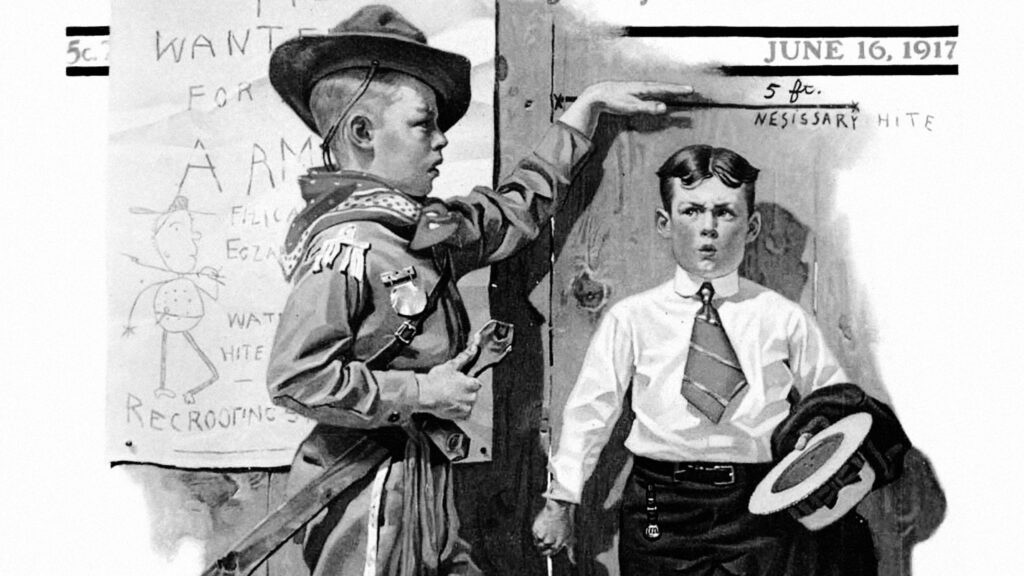A well-defined organizational structure is essential for efficient company management. It improves communication, clarifies responsibilities, optimizes resource use, enhances employee motivation, speeds up decision-making, and ensures goal achievement.
When should a company establish and formalize its organizational structure?
Research shows that companies typically encounter management challenges after growing to around 150 employees. This phenomenon is explained by the “Dunbar’s Number” theory, a concept from anthropology and social psychology introduced by British anthropologist Robin Dunbar. The theory posits that the human brain can only sustain stable social relationships with about 150 people.
The implications of Dunbar’s Number are significant for managing large organizations, highlighting the need for a clear organizational structure to maintain effective communication and coordination. Here’s how it relates:
1. Dunbar’s number
- Research: Dunbar analyzed the sizes of social groups in various cultures and primates, finding that the number 150 consistently appears as the maximum size of groups where members can maintain mutual social connections.
- Cognitive limitations: Humans are limited in their ability to maintain stable social relationships with a large number of individuals. This means that in organizations with more than 150 people, it becomes difficult to have personal relationships with all colleagues.
- Practical implications: The lack of personal connections in large groups complicates informal communication channels, which can lead to information loss and improper coordination.
2. Communication structures and organizational complexity
- Research: Studies show that in large groups, communication becomes less effective without structured channels and a clear hierarchy. For example, Allen’s (1977) research confirmed that technological organizations need structures for effective information dissemination.
- Communication problems: As a company grows, the number of communication channels increases, complicating effective information exchange. The number of possible interactions in a group of N people grows according to the formula N(N−1)/2. For 150 people, this is 11,175 potential interactions.
- Management complexity: Without a clear management structure, it becomes difficult to manage these interactions effectively, leading to chaos and reduced efficiency.
- Collective intelligence: Research has shown that groups with a clear structure and role distribution achieve better results due to increased collective intelligence, which is the ability of a group of people to collaborate effectively, solve problems, and make decisions (Woolley et al., 2010).
Recommended changes for effective management
1. Creating autonomous units
- Goal: Divide the large organization into smaller autonomous teams or units with clear tasks and a limited number of participants (up to 150 people).
- Benefits: This will maintain high communication efficiency and social cohesion within each unit.
2. Implementing effective communication systems
- Goal: Use technologies and tools to improve internal communication, such as corporate messengers, video conferencing platforms, and other collaboration tools.
- Benefits: This will help reduce information loss and improve coordination between different parts of the organization.
3. Developing corporate culture and strengthening trust
- Goal: Focus on developing shared values and a corporate culture that supports mutual trust and collaboration.
- Benefits: This will help reduce conflicts and increase employee motivation.
4. Developing a clear organizational structure
- Goal: Create a clear hierarchy and distribution of responsibilities to ensure clarity of roles and accountability.
- Benefits: This will facilitate decision-making and reduce chaos in large organizations.
Based on the experience of APT in implementing and building organizational structures , job descriptions, and competency maps, it can be said that organizations that started building a flexible organizational structure tailored to business needs, beginning at the size of 100+ employees, easily overcame the first growth crisis. Understanding that the organizational structure is the skeleton of the company, it allows for supporting development and scaling.
Conclusion
The “Dunbar’s Number” theory suggests and shows a possible correlation between the number of people in a group and their relationships. Applying this theory to a business environment, it can be said that without a clear organizational structure, large companies face challenges in communication, coordination, and maintaining social cohesion. Implementing a clear structure allows the organization to be divided into smaller units, easing management and increasing efficiency. Such measures will help reduce the impact of crises related to company growth and maintain effective functioning even with a significant increase in the number of employees.
Sources
1. Dunbar, R. I. M. (1992). “Neocortex size as a constraint on group size in primates.” Journal of Human Evolution, 22(6), 469-493.
2. Allen, T. J. (1977). “Managing the Flow of Technology: Technology Transfer and the Dissemination of Technological Information within the R&D Organization.” MIT Press.
3. Woolley, A. W., Chabris, C. F., Pentland, A., Hashmi, N., & Malone, T. W. (2010). “Evidence for a Collective Intelligence Factor in the Performance of Human Groups.” Science, 330(6004), 686-688.
Authors: Oleksandra Alkhimovych, Mariia Kot
Чому компанії потребують чіткої організаційної структури?
Чітка організаційна структура є фундаментальною для ефективного управління компанією. Вона забезпечує покращення комунікації, розподіл обов’язків, ефективне використання ресурсів, підвищення мотивації працівників, швидке прийняття рішень та забезпечення досягнення результатів.
Як зрозуміти коли саме необхідно формувати та формалізувати організаційну структуру в компанії?
Наукові дослідження підтверджують, що після досягнення компанією розміру 150 людей починаються перші кризи в управлінні. Причини цього детально обговорюються в контексті теорії “Числа Данбара” (Dunbar’s number). Це концепція, що походить з антропології і соціальної психології, і яку запропонував британський антрополог Робін Данбар. Згідно з цією теорією, людський мозок обмежений у здатності підтримувати стабільні соціальні відносини з приблизно 150 особами.
Теорія “Числа Данбара” стверджує, що існує когнітивна межа кількості стабільних соціальних відносин, які людина можуть підтримувати. Ця теорія має важливі імплікації для управління великими організаціями, оскільки вказує на необхідність чіткої організаційної структури для забезпечення ефективної комунікації та координації.
Ось як це пов’язано:
1. Число Данбара
- Дослідження: Данбар проаналізував розміри соціальних груп у різних культурах і приматах, виявивши, що число 150 постійно з’являється як максимальний розмір груп, у яких члени можуть мати взаємні соціальні зв’язки .
- Когнітивні обмеження:Люди обмежені в своїй здатності підтримувати стабільні соціальні зв’язки з великою кількістю осіб. Це означає, що в організації понад 150 осіб стає складно мати персональні відносини з усіма колегами.
- Практичні наслідки: Відсутність особистих зв’язків у великих групах ускладнює неформальні канали комунікації, що може призвести до інформаційних втрат і неправильної координації.
2. Комунікаційні структури та організаційна складність
- Дослідження:Дослідження показують, що у великих групах комунікація стає менш ефективною, якщо немає структурованих каналів та чіткої ієрархії. Наприклад, дослідження Аллена (1977) підтвердили, що технологічні організації потребують структур для ефективного поширення інформації .
- Проблеми з комунікацією: З ростом компанії збільшується кількість комунікаційних каналів, що ускладнює ефективний обмін інформацією. Кількість можливих взаємодій у групі N людей зростає за формулою N(N−1)/2. Для 150 людей це 11175 потенційних взаємодій.
- Складність управління: Без чіткої структури управління стає важко ефективно керувати цими взаємодіями, що може призвести до хаосу та зниження ефективності.
- Колективний інтелект: Дослідження показали, що групи з чіткою структурою та розподілом ролей досягають кращих результатів завдяки підвищенню колективного інтелекту, що є здатністю групи людей ефективно співпрацювати, вирішувати проблеми та приймати рішення. (Woolley et al., 2010).
Рекомендовані зміни для ефективного управління
1. Створення автономних підрозділів
- Мета: Розділити велику організацію на менші автономні команди або підрозділи, які мають чіткі завдання і обмежену кількість учасників (до 150 людей).
- Переваги: Це дозволить зберегти високу ефективність комунікацій та соціальну згуртованість всередині кожного підрозділу.
2. Впровадження ефективних систем комунікації
- Мета: Використання технологій та інструментів для покращення внутрішньої комунікації, таких як корпоративні месенджери, платформи для відеоконференцій та інші засоби співпраці.
- Переваги: Це допоможе зменшити інформаційні втрати та покращити узгодженість дій між різними частинами організації.
3. Розвиток корпоративної культури та зміцнення довіри
- Мета: Приділяти увагу розвитку спільних цінностей та корпоративної культури, яка підтримує взаємну довіру та співпрацю.
- Переваги: Це допоможе знизити конфлікти і підвищити мотивацію працівників.
4. Розробка чіткої організаційної структури
- Мета: Створення ясної ієрархії та розподілу обов’язків, що забезпечить зрозумілість ролей та відповідальностей.
- Переваги: Це полегшить прийняття рішень і зменшить хаос у великих організаціях.
Спираючись на досвід компанії АРТ по впровадженню та побудові організаційних структур, опису посад, карт компетенції, можна сказати, що організації, які починали будувати гнучку організаційну структуру під потреби бізнеса, починаючи з розміру організації в 100+ співробітників легко долали кризу першого зростання. Розуміючи, що організаційна структура – це скелет компанії, який дозволяє підтримувати розвиток та масштабування.
Висновок
Теорія “Числа Данбара” ілюструє зв’язок між кількістю людей в групі та їхніми взаємозв’язками. Перекладаючи на бізнес-середовище цю теорію, можна сказати, що без чіткої організаційної структури великі компанії стикаються з проблемами комунікації, координації та підтримки соціальної згуртованості. Впровадження чіткої структури дозволяє розділити організацію на менші підрозділи, полегшуючи управління та підвищуючи ефективність. Такі заходи дозволять знизити вплив кризових ситуацій, пов’язаних з ростом компанії, і зможуть підтримувати її ефективне функціонування навіть при значному збільшенні кількості працівників.
Джерела
- Dunbar, R. I. M. (1992). “Neocortex size as a constraint on group size in primates.” Journal of Human Evolution, 22(6), 469-493.
- Allen, T. J. (1977). “Managing the Flow of Technology: Technology Transfer and the Dissemination of Technological Information within the R&D Organization.” MIT Press.
- Woolley, A. W., Chabris, C. F., Pentland, A., Hashmi, N., & Malone, T. W. (2010). “Evidence for a Collective Intelligence Factor in the Performance of Human Groups.” Science, 330(6004), 686-688.
Aвтори: Олександра Альхімович, Марія Кот.




